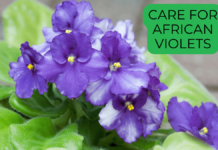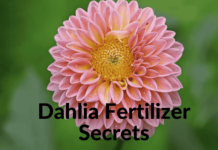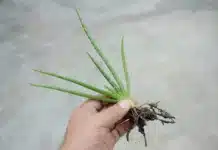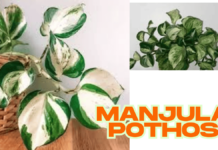Senna shrub is With its eye-catching blooms and tolerance to tough conditions, Senna wislizeni has earned a permanent place in my garden and my heart. From its brilliant yellow flowers to its significance in pollinator conservation, this perennial deciduous shrub tells a compelling story of resilience, ecological value, and natural elegance.
Understanding the Roots: What is Senna shrub wislizeni?
Senna shrub wislizeni, also known by its many aliases—Canyon Senna, Shrubby Senna, Dwarf Senna, Wislizenus’s Senna, Carrozo, Pinacate, Palo Prieto, Pinacatillo, Hojasén, and Ejotillo—belongs to the Fabaceae or Pea Family. Originally classified by A. Gray and later revised by Irwin and Barneby, this plant is sometimes listed under its synonym Cassia wislizeni.
Hailing from the Americas: Native Habitat
In much of northern Mexico extending to Puebla in central Mexico, this woody shrub thrives in dry slopes, rocky mesas, and sun-drenched regions. It has adapted exceptionally to Zone 7, where winter temperatures can drop to 0° F.
Appearance that Speaks Volumes
Standing anywhere from 5′ to 8′ tall with a rounded, upright growth habit, the Senna shrub showcases short, rigid, leafy branches lined with compound foliage. Its alternate, dark green leaves are obovate to cuneate-obovate, typically 1/6″ to 3/8″ in length. The foliage grows spirally on spurs, giving it a sculptural texture.
Blooming Marvel: A Burst of Yellow
The blooming phase—from May through July, and occasionally into late spring, summer, and autumn—produces bright, showy yellow flowers arranged in clusters or panicles (about 3/4″ wide) at the tips of branches. These blooms create an attractive contrast to the green foliage. Following the flowers, long, flat, dark-brown seed pods appear.
Soil and Sun: A Tough Performer
Senna shrub wislizeni is a plant of the sun, although it handles partial shade as well. It grows best in well-drained, igneous soils, but I’ve seen it flourish in clay, loam, sand, and even chalky soils. Whether the pH is acidic, alkaline, or neutral, this shrub is reliably drought-tolerant, requiring only deep irrigations when completely dry.
Resilience at its Core
If you garden in poor soil, worry not. Senna thrives with low water requirements and adapts to heat like a pro. It’s best planted between April and October for optimum establishment. Once settled, it’s a dependable performer year after year.
An Important Note: Toxicity and Safety
Here’s a warning worth noting—plants in this genus and herbal remedies derived from them may cause poisoning and even fatal illness in humans. Toxicity levels vary by season, plant part, and growth stage. Children are especially at risk due to their vulnerability, curiosity, and small size. Individual sensitivity depends on age, weight, and physical condition. These plants may also absorb toxic substances such as herbicides, pesticides, and pollutants from air, water, and soil.
Supporting Pollinators: A Garden Ally
Senna’s shrubyellow blooms are not only visually stunning—they’re a beacon for pollinators, especially bumble bees. According to the Pollinator Program by the Xerces Society for Invertebrate Conservation, Senna wislizeni holds special value in sustaining local ecosystems.
Seen in the Wild and Public Spaces
Senna shrub wislizeni is featured in the species list of various affiliate organizations. Notable display locations include the Sibley Nature Center in Midland, Texas, and the Texas Parks and Wildlife Department in Austin. Seeing it flourish in these curated settings gave me confidence to try cultivating it at home.
Cultivation and Garden Uses
Ideal for beds, borders, hedges, or screens, this moderate growth rate shrub brings structure and seasonal color to landscapes. Use 4′ to 5′ spacing for best results. The structure, color, and hardiness make it an excellent backdrop or focal point in water-wise gardens.
FAQs About Senna Shrub
How tall does Senna wislizeni grow?
It typically grows between 5′ to 8′, with a rounded, upright form.
Is the Senna shrub drought-tolerant?
Absolutely. Once established, it performs well with low water and deep irrigation during dry spells.
Are Senna plants safe for children?
Caution is advised. They contain toxins that may cause illness if ingested. Always plant with safety in mind.
When is the best time to plant Senna?
The optimal window is April through October when soil is warm and conditions support strong root development.
Can I grow Senna in acidic or alkaline soil?
Yes. Senna wislizeni adapts well to a range of soil pH—acidic, alkaline, or neutral.
Final Thoughts: Why Senna Shrub Deserves a Place in Your Garden
Whether you’re aiming for low-maintenance landscaping, promoting invertebrate conservation, or simply drawn to bright, showy blooms, the Senna shrub offers unmatched value. Native to the Americas, celebrated for its durability, and admired for its beauty, it’s a rewarding choice for any gardener. From USDA zones, botanical background, to ecological significance—it’s a plant that tells a story worth growing.


























